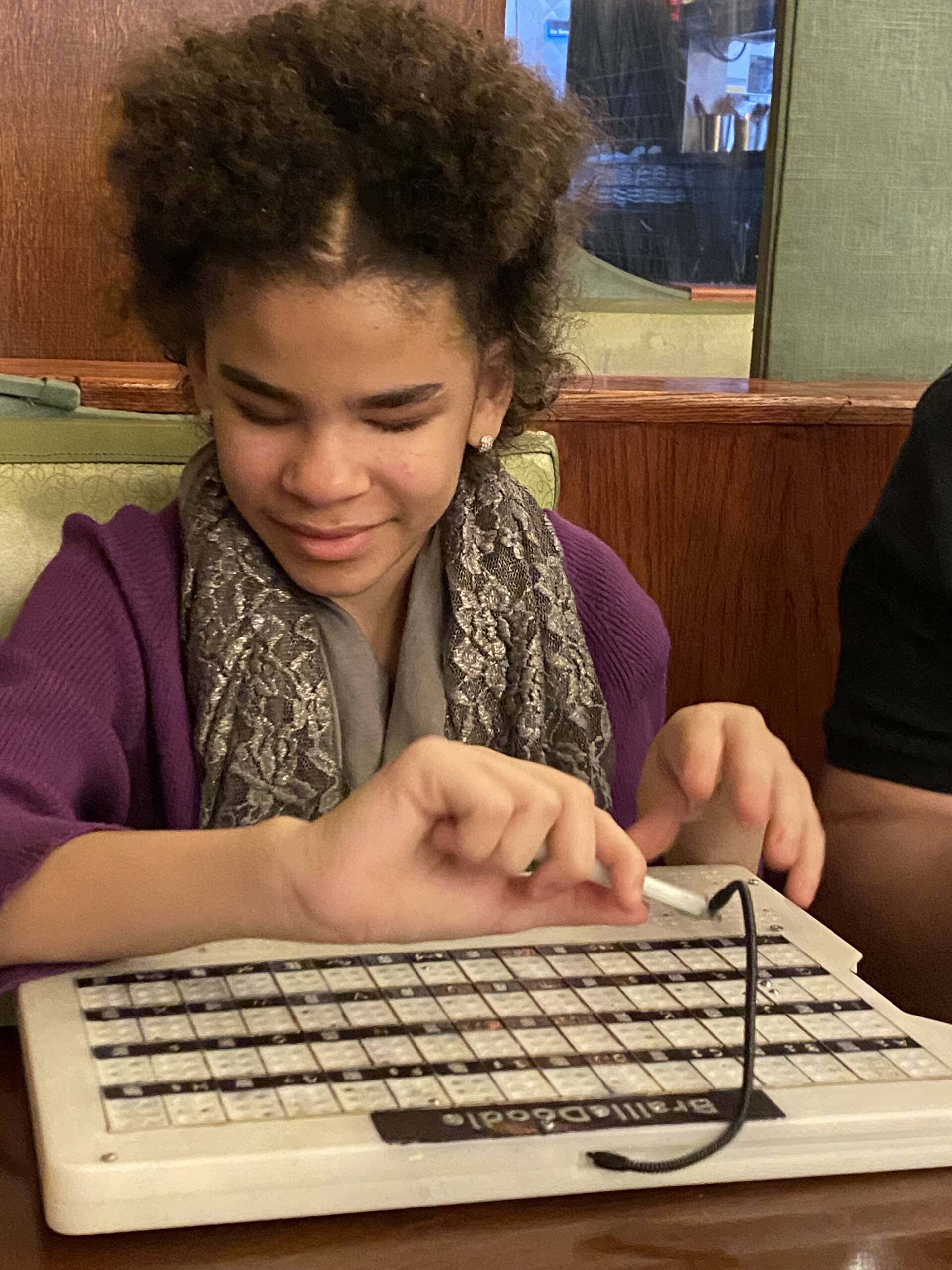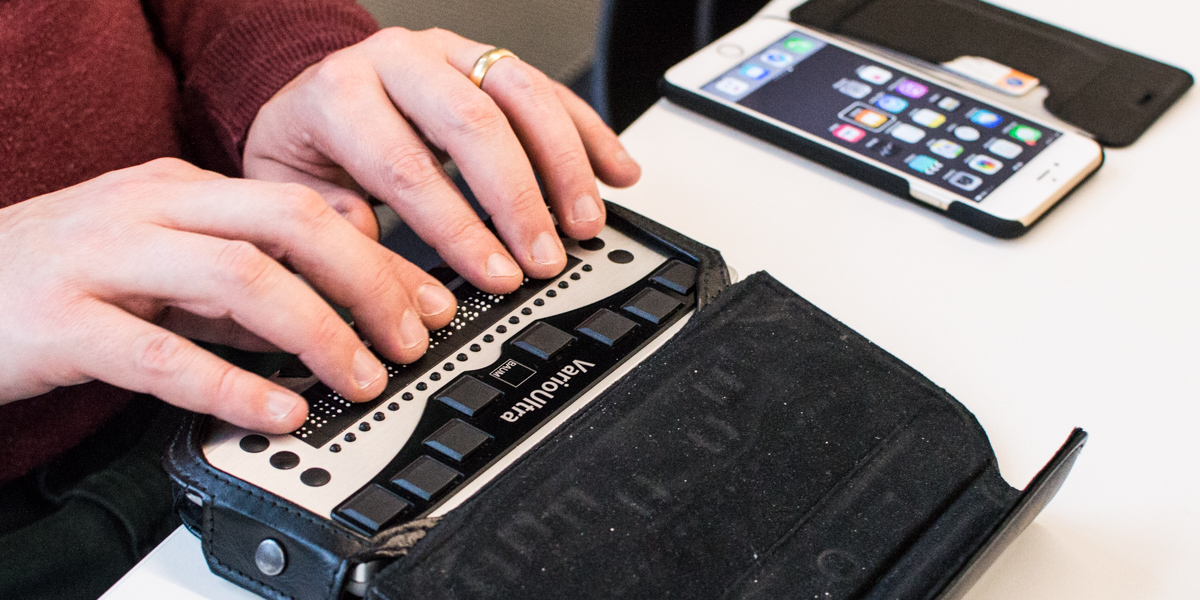Mobility Aids for Visually Impaired Users: Improving Autonomy
Mobility Aids for Visually Impaired Users: Improving Autonomy
Blog Article
Discover Cutting-edge Devices Made for the Aesthetically Impaired
The development of innovative tools for the aesthetically impaired represents a substantial innovation in availability and freedom. Technologies such as clever glasses with AI capacities and mobile applications made to supply auditory descriptions are improving day-to-day experiences for individuals. Furthermore, wearable devices that utilize haptic comments enhance environmental recognition, while contemporary Braille advancements provide new means to involve with text. As these devices remain to progress, their effect on the lives of those with aesthetic disabilities increases vital concerns concerning the future of inclusivity and autonomy in numerous aspects of life. What exists ahead in this technological landscape?
Smart Glasses for Navigation

Smart glasses developed for navigation are revolutionizing the method aesthetically damaged individuals connect with their atmosphere. These sophisticated tools utilize a combination of electronic camera technology, expert system, and acoustic responses to give real-time info regarding surroundings. By utilizing barrier discovery systems, clever glasses can inform customers to potential threats, making it possible for more secure wheelchair in both familiar and unknown setups.
The combination of GPS technology additionally enhances navigating capacities, enabling users to obtain auditory instructions as they relocate. This hands-free method not only fosters self-reliance yet also empowers visually damaged individuals to browse metropolitan landscapes with increased self-confidence. In addition, several clever glasses are equipped with attributes that identify landmarks and road indications, giving contextual information that improves the user experience.
Furthermore, the growth of these devices is continually progressing, with firms working to improve the accuracy of things acknowledgment and expand the variety of navigational features. As smart glasses end up being a lot more inexpensive and easily accessible, they hold the potential to significantly change every day life for aesthetically impaired customers. Eventually, these innovative devices represent an essential step toward inclusivity, offering enhanced movement and a higher sense of autonomy for people navigating the globe around them.

Mobile Apps for Daily Living
Exactly how can mobile applications enhance the day-to-days live of aesthetically damaged individuals? Mobile applications are revolutionizing the method visually damaged users navigate their environments, manage everyday jobs, and accessibility info. These applications provide necessary assistance with various capabilities, fostering self-reliance and boosting high quality of life.
Numerous innovative mobile apps are designed especially for everyday living. Apps like Be My Eyes attach visually damaged individuals with sighted volunteers through video clip calls, permitting them to get real-time help with jobs such as checking out tags or browsing strange areas. Likewise, Seeing AI, developed by Microsoft, makes use of man-made knowledge to describe environments, reviewed text, and identify objects, successfully transforming a smartphone into an effective device for day-to-day help.
Furthermore, navigating applications customized for the visually damaged, such as Aira and BlindSquare, offer audio-based instructions and environmental information, allowing users to traverse their environments securely and with confidence. Past navigation and immediate help, mobile applications additionally support organization and job administration, with attributes that assist individuals set reminders, produce to-do checklists, and track appointments. In summary, mobile applications work as essential resources, encouraging aesthetically damaged individuals to lead even more independent and fulfilling lives.
Wearable Technologies for Support
Empowerment with modern technology is progressively apparent in the world of wearable tools designed to aid visually damaged people. These innovative devices incorporate flawlessly right into day-to-day live, improving navigating and supplying necessary comments to individuals. Clever glasses furnished with video cameras can review and acknowledge faces text aloud, permitting users to connect more with confidence in specialist and social settings.
Another remarkable advancement is making use of haptic responses systems in wearable tools. These systems utilize vibrations or various other responsive signals to share details about the customer's atmosphere, such as obstacles or changes in surface, boosting mobility and safety. Wearable modern technologies likewise consist of wristbands that attach to mobile phones, signaling individuals to alerts with subtle resonances, thus improving connectivity without dependence on aesthetic hints.
As these technologies remain to evolve, they are not just improving self-reliance for visually damaged people however additionally fostering a higher feeling of addition in society. By connecting the gap in between challenges dealt with in day-to-day living and the potential for autonomy, wearable technologies offer as critical tools in the quest for equal rights and empowerment for those with visual problems.
Audio Description Tools
Audio description tools play a vital function in enhancing special info availability for aesthetically damaged individuals, providing them with the capacity to engage with aesthetic media. Screen readers for the blind. These devices offer narrated summaries of vital aesthetic components in films, tv programs, and live performances, guaranteeing that customers can completely understand the context and emotions communicated with visuals
Audio summary can be integrated into different platforms, including streaming services, movie theater testings, and live cinema. Several prominent streaming services now consist of audio description as an access feature, enabling audiences to pick it conveniently. In enhancement to conventional media, specialized applications likewise exist, supplying audio descriptions for art events, galleries, and other social occasions.
The effectiveness of audio summary pivots on the skill of the narrators, who must share visual details succinctly without interfering with the original sound. Innovations in this area are likewise leading the way for even more personalized experiences, where customers can adjust the level of information and pacing according to their preferences.
Braille Innovations and Devices
Braille gadgets and technologies have substantially transformed the means visually impaired individuals communicate with text and info. Modern innovations have led to the development of versatile tools that improve proficiency and freedom among individuals.
Additionally, mobile Braille notetakers combine typical Braille input with modern performances, promoting note-taking, scheduling, and document editing and enhancing on the move. Screen readers for the blind. These small devices typically feature text-to-speech abilities, connecting the space in between Braille and acoustic info
Additionally, ingenious Braille printers have actually arised, enabling users to generate Braille tags, documents, and instructional materials efficiently. This ease of access promotes better engagement in specialist and instructional settings, ultimately advertising inclusivity.
Moreover, research study into clever Braille innovations continues to increase. my response Tools that integrate artificial knowledge are being discovered to offer real-time navigating aid and contextual details, improving the user experience in diverse settings. On the whole, these technologies reflect a commitment to encouraging aesthetically impaired individuals through modern technology, guaranteeing they can easily accessibility and involve with the world around them.

Conclusion
The development of innovative devices for the visually damaged considerably enhances freedom and high quality of life. These technologies not only foster greater addition but additionally advertise autonomy in day-to-day activities, inevitably adding to an same day eyeglasses near me extra fair and available culture for visually damaged individuals.
As clever glasses end up being a lot more available and inexpensive, they hold the prospective to dramatically transform day-to-day life for aesthetically damaged individuals. Mobile apps are reinventing the means aesthetically impaired individuals browse their environments, manage day-to-day jobs, and access info. Apps like Be My Eyes connect visually damaged customers with sighted volunteers by means of video clip calls, enabling them to get real-time help with tasks such as checking out tags or browsing unfamiliar spaces.In addition, navigation applications customized for the visually impaired, such as Aira and BlindSquare, provide audio-based instructions and ecological details, allowing customers to traverse their environments safely and confidently.The innovation of cutting-edge tools for the visually impaired considerably enhances freedom and quality of life.
Report this page